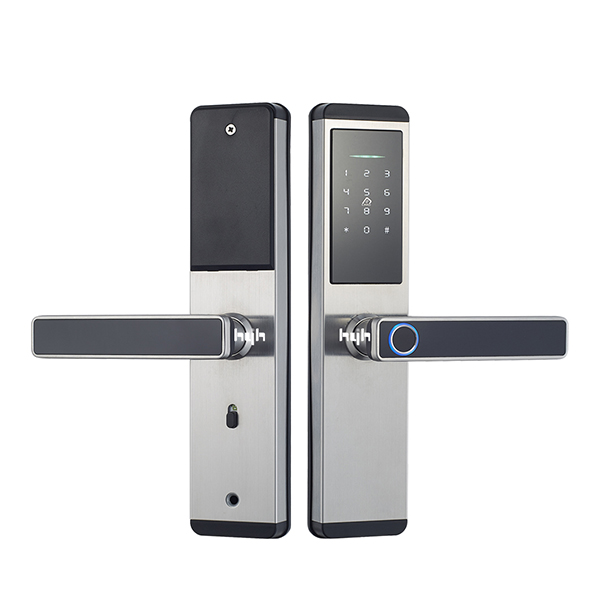Unmasking Security: The Technology Behind Biometric Fingerprint Recognition in Smart Door Locks
2023-11-16
Introduction:
In the realm of modern security, the convergence of technology and innovation has given rise to the Electronic Digital Biometric Fingerprint Smart Door Lock. At the heart of this cutting-edge device lies a sophisticated biometric fingerprint recognition system, transforming the way we secure our homes. In this blog, we unravel the intricate technology that powers the fingerprint recognition system in smart door locks, providing a glimpse into the future of home security.
1. Optical Fingerprint Scanning:
At the core of the biometric fingerprint recognition system is the use of optical scanning technology. When a user places their finger on the scanner, an optical sensor captures the unique pattern of ridges and valleys on the fingertip. This high-resolution image serves as the basis for creating a unique biometric profile.
2. Capacitive Sensors:
Capacitive sensors are instrumental in capturing the electrical impulses generated by the friction ridges on the fingertip. As the user places their finger on the sensor, the capacitive technology detects the minute electrical differences between ridges and valleys, creating a precise and detailed fingerprint image.
3. Image Processing Algorithms:
The captured fingerprint image undergoes sophisticated image processing algorithms. These algorithms enhance the clarity of the fingerprint pattern, filter out extraneous details, and create a digital template that represents the unique features of the user's fingerprint.
4. Template Storage and Encryption:
The digital template of the fingerprint is securely stored within the smart door lock's memory. To ensure privacy and security, the templates are often encrypted, rendering them unreadable even if unauthorized access is attempted. This storage method prevents the direct recreation of the original fingerprint from the stored data.
5. Matching Algorithms:
When a user attempts to unlock the door, the live fingerprint scan is compared with the stored template using matching algorithms. These algorithms analyze specific points of reference on the fingerprint, such as minutiae points where ridges end or bifurcate. The matching process is highly sophisticated, ensuring a high level of accuracy.
6. False Acceptance and False Rejection Rates:
To enhance security, the system is designed to balance false acceptance and false rejection rates. False acceptance occurs when the system incorrectly identifies an unauthorized user as authorized, while false rejection happens when it denies access to an authorized user. Fine-tuning these rates ensures a system that is both secure and user-friendly.
7. Live Finger Detection:
To prevent spoofing attempts using artificial fingerprints or images, many smart door locks incorporate live finger detection. These systems use various techniques, such as analyzing blood flow or detecting the electrical conductivity of live skin, to ensure that the presented fingerprint is from a live, authentic finger.
8. Adaptive Learning:
Some advanced systems employ adaptive learning, continually updating the stored template based on variations in the user's fingerprint over time. This adaptive approach accounts for changes due to factors such as aging, skin conditions, or injuries, ensuring consistent and reliable recognition.
Conclusion:
The technology behind the biometric fingerprint recognition system in Electronic Digital Smart Door Locks is a testament to the advancements in security and user authentication. By seamlessly integrating optical scanning, capacitive sensors, and sophisticated algorithms, these smart locks provide a level of precision and reliability that surpasses traditional security measures. As technology continues to evolve, the future holds exciting possibilities for the enhancement of biometric security in smart homes.



